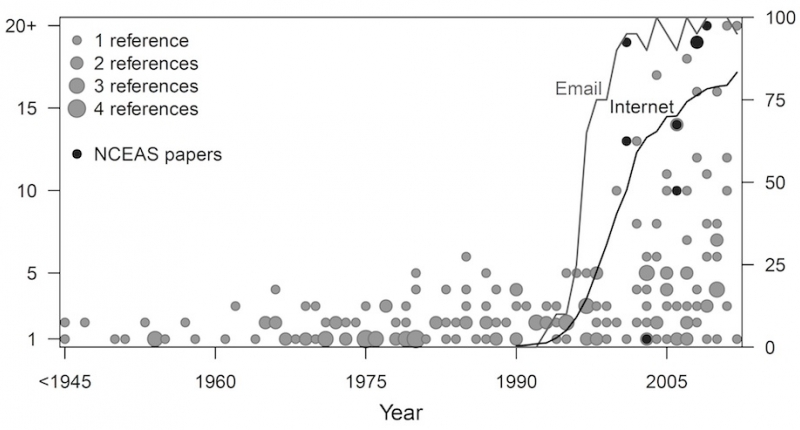Figure for Thought: What Do Email and NCEAS Have in Common?

Hopefully, you aren’t thinking spam. For the real answer, a new paper in the journal Fish and Fisheries found correlations between a rise in multi-author publications and the rise of email, the Internet, and NCEAS.
In other words, there is something to email and the working group model that facilitated broader collaborations among scientists, which may also contribute to citation rates.
Lead author, Trevor Branch, professor at University of Washington’s School of Aquatic and Fisheries Sciences, explains the finding as it relates to their larger question of what makes some fisheries publications so highly cited.
"We identified highly cited fisheries papers, books, and databases and found a striking increase in the number of authors per reference over time. Up to 1999, 51 percent had a single author and none had more than six authors; after 2000, only 19 percent had a single author and 27 percent had more than six authors.
This dramatic increase happened a couple of years after the rapid uptake of the internet and email in fisheries science, as well as the start of papers coming from NCEAS working groups – although it is difficult to prove a causal relation.
Eight of 166 fisheries papers coming from NCEAS were highly cited, and seven of those eight had 10 or more authors. Additionally, NCEAS fisheries papers were more likely to be highly cited than fisheries papers published in any journal, including Science or Nature."
Figure for Thought features thought-provoking figures from NCEAS-supported publications with a brief explanation from the lead author.
